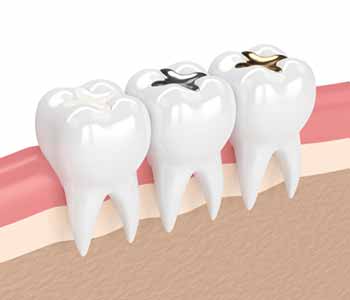What is the mercury Tri-Test available in Central, Hong Kong?

According to scientists, mercury is a highly toxic material in every form. Our mucous membranes and skin can easily absorb it. We can easily inhale mercury vapors through respiration. Despite knowing its harmful effects, we have been misusing mercury to treat typhus, syphilis, skin conditions, intestinal parasites, constipation, and various other acute chronic conditions.
In fact, mercury is even used in manufacturing dental amalgam fillings, and vaccines in the form of a preservative. As a result of the modern-day medicinal applications, the presence of mercury has reached dangerous levels in children and adults. Moreover, mercury can also enter the human body by the consumption of fish that have been captured from mercury-polluted waters.
Although many of us are aware of the dangers of mercury, most of us do not know about its testing procedures. Mercury is available in primarily two types. It is essential for the mercury test to include testing procedures for both types.
Inorganic mercury (HgII) occurring in blood indicates exposure to dental amalgam and is excreted from the body via urine. Some inorganic mercury is also generated inside the body by the breakdown of methylmercury. Being a cytotoxic form of mercury, methylmercury is easy to track. An index of how efficiently the body excretes inorganic mercury can be obtained by the urine to blood ratio.
Presence of Methylmercury (MeHg) indicates seafood consumption. A small quantity of methylmercury develops in the gut because of the swallowed amalgam-based mercury. The excretion of methylmercury can be tracked by the hair. An index of how efficiently the body excretes methylmercury can be obtained by the hair to blood ratio.
Testing the Presence of Mercury by the Tri-Test

The Quicksilver Mercury Tri-Test in Central, Hong Kong is a tried and tested clinical procedure that employs mercury speciation analysis, an advanced patented technology that separates inorganic mercury (HgII) from methylmercury (MeHg) and measures each directly.
The CLIA-certified laboratory of Quicksilver Scientific specializes in the advanced mercury speciation analysis using the patented Mercury Tri-Test. The test uses the samples of blood, hair, and urine for assessing the mercury burden and ability of the body to eliminate it. The Mercury Tri-Test helps patients and practitioners understand the magnitude as well as the source of mercury exposure. The test results also help in analyzing if the process of mercury detoxification requires any additional support.
Quicksilver Scientific’s instruments are highly sensitive in measuring ambient mercury levels within the human body without requiring any challenge testing. The laboratory test gives unprecedented information regarding sources of exposure, burden, and the ability of the body to excrete both forms of mercury. Detailed information helps in building an informed picture to plan an appropriate approach for a successful detoxification strategy.
How Mercury Tri-Test Differs from Mercury Challenge Tests
In the 1990’s, analytical equipment was not sensitive enough to measure ambient or steady state mercury levels in the blood. Therefore provocation or challenge testing was introduced for pulling out mercury from the organic cellular structure by using heavy doses of strong chelating agents. The procedure helped in the urinary analysis in the diagnostic premise to show the body burden of mercury for an individual.
Also, the procedure helped in determining the correlation for long-term mercury burden. During that time, the challenge testing proved clinically relevant. However, with technological advancements, clinical studies have proven that challenge testing is not reliable and can even be potentially damaging for a person.
The Requirement for Mercury Speciation Analysis

The total mercury analysis cannot individually provide an adequate representation for the chemistry of mercury present in the test sample. As per the study published in Science, we can obtain clear data relationships and accurate conclusions by knowing the distribution of divergent types of mercury. For this reason, current research recommends the application of mercury speciation over total mercury analysis. The mercury speciation by Quicksilver Scientific provides more insightful data along with following key advantages:
- It applies a single test procedure for measuring the biologically active forms of mercury.
- It gives clear data about the distribution or proportion of inorganic mercury to methylmercury and total mercury occurring in a test sample.
- It can effectively predict the toxicity and mobility of mercury through the food chain in a specific ecosystem.
Your test provider will discuss your eating habits during an initial consultation. This will help you in knowing which foods are best, which foods to combine, and how to time meals properly. The information is essential for effectively predicting the results of your mercury tri-test in Central Hong Kong.
Back to Mercury Tri-Test Page